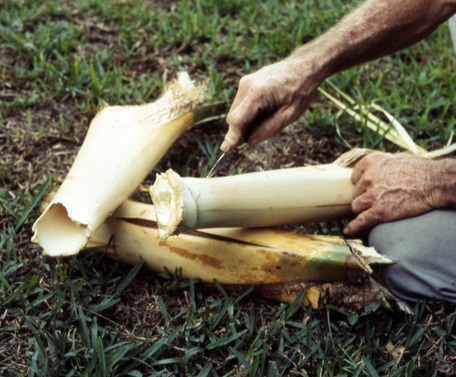Heart of Palm: A Keto-Friendly Miracle Vegetable
- ketogenicfasting
- Oct 15, 2024
- 2 min read
Heart of palm is a delicious, crunchy vegetable harvested from the inner core of certain varieties of palm trees, with the cabbage palm being the most common source. Native to tropical and subtropical regions, heart of palm is predominantly cultivated in countries like Costa Rica, Ecuador, Brazil, and Thailand, where palm trees thrive in the warm climate.
How It's Harvested and Processed
The vegetable is obtained from young palm trees. First, the outer layers of the tree are carefully removed to expose the tender, edible white core—the "heart." This process requires precision to preserve the delicate inner core.
Once harvested, the heart of palm is either left whole or cut into strips, depending on its intended use.
For noodles or rice, the core is sliced into thin strands or finely chopped, then packaged for sale as a low-carb alternative to traditional pasta and grains.
Flavor and Culinary Versatility
The flavor of heart of palm is mild and delicate, often compared to white asparagus or artichoke hearts. This subtle taste makes it highly versatile, seamlessly complementing a wide range of dishes. Whether used as a base for pasta, rice dishes, or salads, heart of palm provides a refreshing crunch while absorbing the flavors of accompanying ingredients.
The Nutritional Values
In 2018, the Agricultural Research Service of the U.S. Department of Agriculture released a detailed break down of the nutritional values of the raw hearts of palm listed on the Food Data Central.
Heart of palm has remarkably low carb content. Due to its fairly low carb and fat levels, this veggie has very few calories. It also provides several minerals. Due to its high water and fiber content, heart of palm may also promote feelings of fullness.
A 100-gram (3.5 oz) serving of raw heart of palm contains:
Additionally, heart of palm offers small amounts of several other nutrients, including iron, calcium, magnesium, and folate.
Benefits
Antioxidant: Heart of palm is rich in plant compounds like polyphenol antioxidants which neutralize free radicals.
Polyphenols help:
lower your blood sugar levels, contributing to a lower risk of type 2 diabetes.
improve heart health.
reduce your risk of developing a blood clot.
benefit digestion by promoting the growth of beneficial gut bacteria while fending off harmful ones.
boost your focus and memory.
reduce your risk of certain conditions, such as cancer.
reduce inflammation.
aid weight loss.
In conclusion...
Due to its high antioxidant and mineral contents, as well as its low calorie count, heart of palm may help prevent various diseases and promote weight loss.















Comments